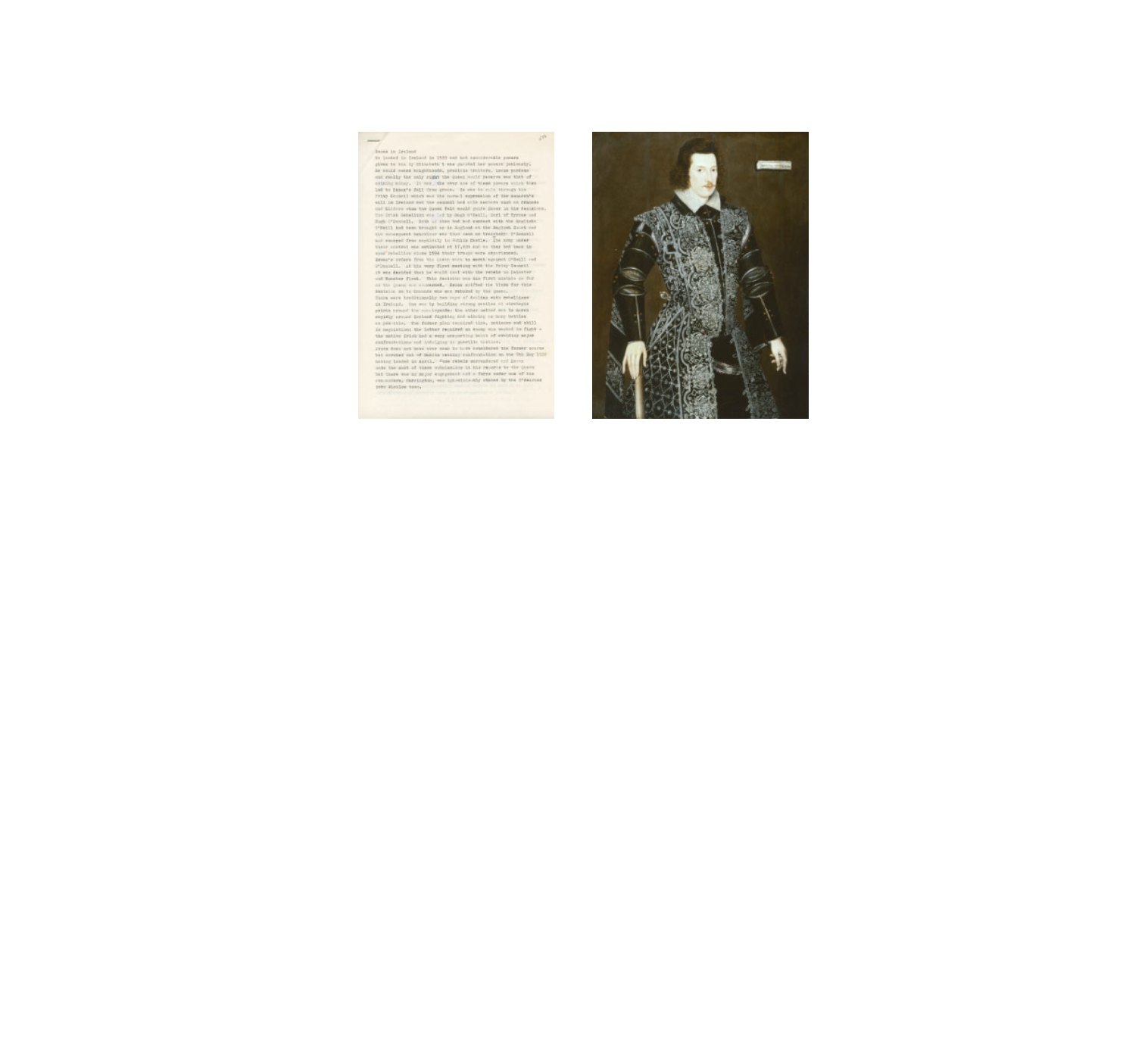
24
65
PrivyCouncilLetterRelatingtotheEarlofEssex’s disastrousExpeditionagainstthe Irish
includingHugh O’NeillandHughO’Donnell.
The Privy Council was one of the oldest features of the British Constitution. In practice, many everyday administrative tasks were per-
formed by the courtiers who happened to be around the Court. These became known as the King’s Council. A smaller informal coun-
cil emerged in the 1530’s from the larger King’s council. It became known as the Privy Council. Its members were those important of-
ficers of state and of the Royal household. The King’s council evolved into Parliament and the Privy Council into the modern Cabinet.
This document is a fine Elizabethan Privy Council letter to Thomas Sackville, Lord Buckhurst, the Lord Treasurer and Sir John
Fortescue, Chancellor of the Exchequer. It required them to reimburse Edward Willard for expenses incurred in sending 400 sol-
diers from Sussex “into the lowe countries to supplie the like number withdrawn from thence for her majestie’s service in Ireland”.
It is signed by Robert Devereux, Earl of Essex, Elizabeth’s favourite and her Master of the Horse who led the Irish campaign; Charles
Howard, Earl of Nottingham, Lord High Admiral, who held chief command against the Armada; Roger, Lord North, Treasur-
er of the Queen’s Household; Thomas Sackville, Lord Buckhurst, the poet, Lord Treasurer (also, one of the recipients); Robert Cec-
il, later Earl of Salisbury, Secretary of State; and, Sir John Fortescue, Chancellor of the Exchequer. The letter from “Whitehall 25 Janu-
ary 1598” (i.e. 1599) ordered that the 400 soldiers be “furnished and provided with coats and conduct money in their marche to
Margett (Margate), where they were imbarqued”. £80 was for the coats, the balance was for ‘conduct money’ i.e. travel expenses.
1599was the year of the Earl of Essex’s fatal (for him) Irish expedition for which soldiers were already being allocated. He was appointed
Governor General of Ireland inMarch and arrived inDublinwith a large force of 16,000 foot and 1700 horse (soldiers) inApril. As Eliz-
abeth’s favourite he had considerable powers. He could award knighthoods, proclaim traitors, issue pardons and do almost everything
except issue money. It was the abuse of these powers that led to his fall from grace. One such abuse was to confer knighthoods on his
officers. The Queen conferred such honours sparingly. At one point, over half the knights in England, owed their honour to Essex. He
disobeyed the Queen’s order in not engaging the Irish and by returning to London. Ultimately he was tried for treason and executed.
The description of Essex as Icarus who flew too high and too near the Elizabethan sun seems quite an accurate summary of his career.
Essex was supposed to rule through the Irish Privy council which had able members such as Ormonde and Kildare. The
Queen wanted Essex to move north against Tyrone(O’Neill), “… the tree which hath…so many poisoned plants and grafts”.
This isa fineexampleof a rarePrivyCouncil letter impingingon Irishaffairs fromadistant eraand featuringmanyof themajorpersonalities
of ElizabethanEngland.
€3500 - 4500


